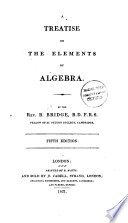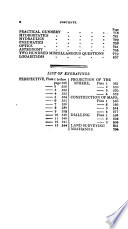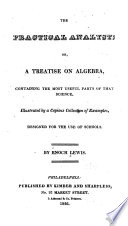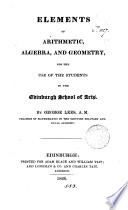 | Robert Patterson - Arithmetic - 1819 - 174 pages
...the sum of all the consequents = s — I : but as one of the antecedents is to its consequent, so is the sum of all the antecedents, to the sum of all the consequents-)-. That is, / : IR : : s — g : * — /. Ilente - — Rg l- Theor. 1. And from the above r series it... | |
 | Bewick Bridge - Algebra - 1821 - 648 pages
...proportional quantities, " a:b::c:d :: e :f :: g : h &c.&c., then will thejfrj/ be " to the second as the sum of all the antecedents to the sum of " all the consequents." And so on for any number of these proportions. TH. 15. " If there be a set of quantities, a, b, c,... | |
 | Euclid - 1822 - 222 pages
...proportional (A ng. 23. to B as C to D) as one of the antecedents to its consequent (A to B), so is the sum of all the antecedents to the sum of all the consequents (sum of A and Cto sum of B and D), For, if there be taken a and c equi-submultiples of (i)Pro;,.i2.... | |
 | Thomas Keith - Arithmetic - 1822 - 354 pages
..., IB. If several quantities be proportional, as one of the antecedents is to its consequent ; so is the sum of all the antecedents, to the sum of all the consequents. Thus, if A : B :: C : D :: E : F :: G : H, &c. Then A : B :: A+C+E+G AA c EG . For, - = —=-=-=—,... | |
 | Peter Nicholson - Mathematics - 1825 - 1046 pages
...proportional quantities, a : b :: с : d :: e :/*:: g : h, &c. &c. then will the FIRST be to the SECOND as the SUM OF ALL THE ANTECEDENTS to the SUM OF ALL THE CONSEQUENTS. For since a : b :: с ": d, alternately, a : с :: Ь 'd. Hence (by THEOREM 7), a : a+c :: Ъ ;therefore,... | |
 | Enoch Lewis - Algebra - 1826 - 180 pages
...65. When any number of quantities are proportionals, as one antecedent is to its consequent, so is the sum of all the antecedents to the sum of all the consequents. Let a : b : : c :'d : : e :f : : g : h, &c., then (art. 62.) ad=bc, of— be, ah=bg, &c., also ab=ba. .-.... | |
 | George Lees - 1826 - 276 pages
...117. WJien any number of quantities are proportionals, i as one antecedent is to its consequent, so is the sum of all the antecedents to the sum of all the consequents. Let a : b : : c : d : : e :f, &c. Then shall a:b:: «+c+c+&c. : b+d+f+&c. For, since a : b : : c : d, ad... | |
 | John Playfair - Geometry - 1829 - 210 pages
...mixing. If several quantities be proportional, as one of the antecedents is to its consequent, so is the sum of all the antecedents to the sum of all the consequents. If four quantities be proportional, and if the first and second be multiplied or divided by any quantity,... | |
 | John Radford Young - Algebra - 1832 - 408 pages
...: dhm, &c. THEOREM 7. In any number of equal ratios, as one antecedent is to its consequent, so is the sum of all the antecedents to the sum of all the consequents. A /7 f A Let the ratios be - = - = - = &c. : Put - = a ; then b = aa, ace a ' d = Cq,f= eq, &c. and,... | |
 | Euclid - Euclid's Elements - 1833 - 216 pages
...magnitudes proportional (A to B as C to D), as one of the antecedents is to its consequent (A to B), so is the sum of all the antecedents to the sum of all the consequents (sum of A and C to sum of B andD.) For, if there be taken a and c equi-submultiples of A and C, the... | |
| |